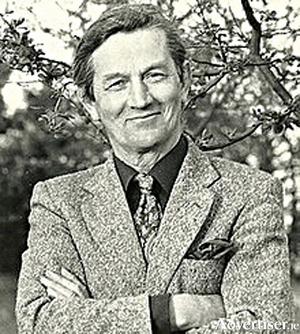Search Results for 'Tom Dillon'
17 results found.
Montpellier Terrace in the 1950s
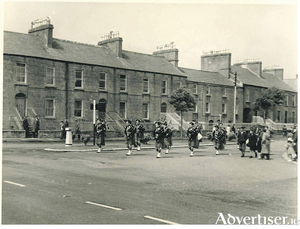
According to An Foras Forbartha’s book Galway Architectural Heritage, “Montpellier Terrace curves around the corner to the Crescent. The first two houses are of three bays and two storeys over basements with rendered walls and railings in front. They date from c1840. Next are two houses without basements of two bays and three storeys with elliptical headed door-cases fronted by simple railings.
Celebrating Eilís Dillon
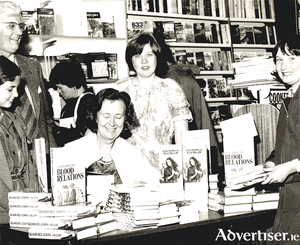
Eilís Dillon was born on March 7, 1920, in Galway. Her parents were Professor Tom Dillon and Geraldine Plunkett, who was a sister of Joseph Mary Plunkett. They were very republican and were forced to move a number of times. They lived for a time in Daingean House and later in Barna for a few years. Eilís went to Barna National School where she became fluent at Irish, later to the Presentation, and later still to the Ursuline Convent in Sligo. She worked for a while in the hotel business.
‘Every time I looked up I saw my father’
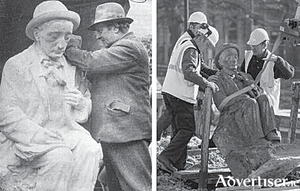
Even before it came to Galway the statue of Sean Pádraic Ó Conaire was causing a stir. As Albert Power carved away in his stone-yard at Berkeley Street, Dublin, word had got out that this was a work of exceptional standards.
NUI Galway students’ energy efficient car wins major award at Shell Eco-marathon Europe
Engineering students from NUI Galway have won first place for technical innovation at Shell Eco-marathon Europe, the continent’s premier competition for ultra-efficient vehicles.
NUI Galway students' energy efficient car wins major award at Shell Eco-marathon Europe
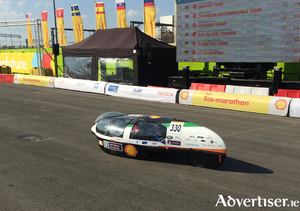
Engineering students from NUI Galway have won first place for technical innovation at Shell Eco-marathon Europe, the continent’s premier competition for ultra-efficient vehicles.
Geraldine Plunkett and Tom Dillon
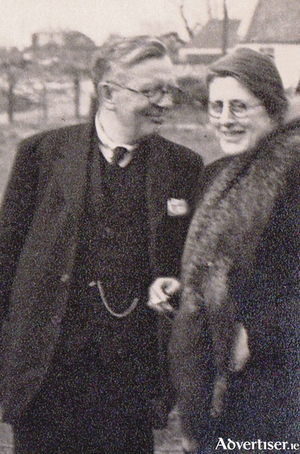
Geraldine Plunkett was a daughter of Count George Noble Plunkett and a sister of Joseph Mary Plunkett. She became Joe’s aide-de-camp and knew all the 1916 leaders. She and Joe lived in Larkfield cottage in Kimmage where they stored guns and ammunition, and a lot of drilling, etc, occurred. Joe brought in Michael Collins to help her with the family accounts.
Dangan House
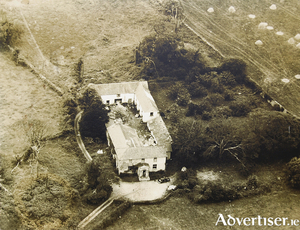
Dangan House, “beautifully situated on the banks of the fine river Corrib” directly opposite Menlo Castle, was built in 1684 as the seat of the Martin family. ‘Humanity Dick’ Martin was brought up there. John Redington purchased Dangan Demesne from Anthony Martin about 1830 and became the proprietor of the townland. It was, for a short time afterwards, converted into an Ursuline Convent. The nuns were there from 1839 to 1844. Dangan House was left to the Board of Guardians of the Galway Union for an auxiliary workhouse until 1854. The only trace of the original Martin building today is the tea-house folly which is on the banks of the river. A nearby property known as Dangan Cottage was leased by a number of American artists in the 1870s but was described as a ruin in the 1890s.
The professor in his wife’s overcoat
Tom Dillon, originally from Co Sligo, married Geraldine Plunkett, on Easter Sunday 1916. The Plunkett family were practically all committed to the Rising, and the subsequent War of Independence. Tom qualified from UCD as a chemist, worked with the Volunteers, and supplied them with a steady stream of hand grenades and bombs. In May 17 1918 he was arrested and interned with other Irish Rebels, in Gloucester prison, England.
Families and weddings Easter 1916
Joseph Plunkett and Grace Gifford were to have a joint wedding with his sister Geraldine Plunkett and her fiancé Tom Dillon, at the Rathmines church, Easter Sunday, April 24 1916. The confusion about the on/off Rising, the rumours about the possibility of Roger Casement being taken prisoner in Kerry, kept the couples guessing as to what would happen. But Joseph, one of the principle organisers of the Rising, probably knew more that what he said to his sister, that Grace ‘did not know the smallest thing about the political situation, and had no idea whatever of such things’.*
